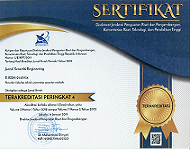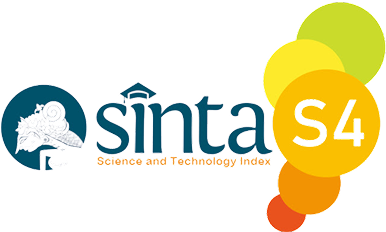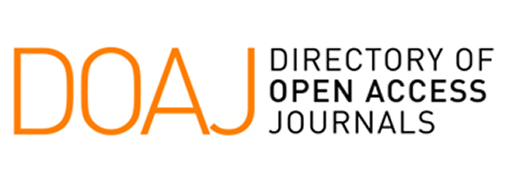Inventarisasi Emisi Gas Rumah Kaca dari Sistem Pengolahan Air Limbah Domestik sebagai Dasar Pendekatan Perencanaan Sanitasi Rendah Karbon di Kota Bandung
Keywords:
gas rumah kaca, tangki septik, IPAL komunal, sistem pengolahan air limbah, metana, dinitrogen oksidaAbstract
Amid global commitments to reducing greenhouse gas (GHG) emissions, the wastewater sector is still often overlooked as a significant emission source. This study aims to estimate and compare GHG emissions, specifically methane (CH₄) and nitrous oxide (N₂O), from two domestic wastewater treatment systems in Bandung City: communal systems (WWTPs) and individual systems (septic tanks). The estimation method refers to the IPCC 2019 Refinement approach. In this method, default emission factors and locally adjusted factors for CH₄ and N₂O are used, in accordance with the specific conditions of each system. Activity data were obtained from primary surveys concerning the number of users, usage frequency, and system characteristics, and supplemented by secondary data from government institutions regarding levels of urbanization and the extent of system utilization. The analysis reveals that, on average, communal WWTPs generate higher CH₄ emissions (7.5 kg/person/year) compared to septic tanks (4.4 kg/person/year), while septic tanks produce higher N₂O emissions (0.1 kg/person/year) than WWTPs (0.02 kg/person/year). Nevertheless, total CO₂-equivalent (CO₂e) emissions from septic tank systems are 33.45 kilotons greater than those from communal WWTPs in aggregate, due to the considerably larger number of users. This study emphasizes the importance of integrating GHG mitigation strategies into sanitation planning by reinforcing communal systems and enhancing technology in individual systems.
References
Badan Pusat Statistik. (2023). Statistik Sanitasi Lingkungan Indonesia 2023. BPS.
Boiocchi, R., Mainardis, M., Rada, E. C., Ragazzi, M., & Salvati, S. C. (2023). Carbon Footprint and Energy Recovery Potential of Primary Wastewater Treatment in Decentralized Areas: A Critical Review on Septic and Imhoff Tanks. Energies, 16(24), 7938. https://doi.org/10.3390/en16247938
Buana, R., & Soewondo, P. (2024). Persepsi Perilaku Sanitasi Masyarakat di Kawasan Semi-Perkotaan Pasca Deklarasi Open Defecation Free dengan Pendekatan IBM-WASH dan KAP. Jurnal Serambi Engineering, 9(4).
Cheng, S., Long, J., Evans, B., Zhan, Z., Li, T., Chen, C., Mang, H.P., Li, Z., 2022. Non-negligible greenhouse gas emissions from non-sewered sanitation systems: a meta-analysis. Environ. Res. 212 (Pt D), 113468 https://doi.org/10.1016/j. envres.2022.113468.
Daelman, M. R. J., van Voorthuizen, E. M., van Dongen, U. G. J. M., Volcke, E. I. P., & van Loosdrecht, M. C. M. (2012). Methane emission during municipal wastewater treatment. Water Research, 46(11), 3657–3670. https://doi.org/10.1016/j.watres.2012.04.024
Gao, B., Ju, X., Su, F., Meng, Q., Oenema, O., Christie, P., ... & Zhang, F. (2014). Nitrous oxide and methane emissions from optimized and alternative cereal cropping systems on the North China Plain: A two-year field study. Science of the Total Environment, 472, 112-124.
González, I. N., Cisneros, B. J., Hernández, N. A., & Rojas, R. M. (2019). Adaptation and mitigation synergies to improve sanitation: a case study in Morelos, Mexico. Journal of Water and Climate Change, 10(3), 671-686.
Graham, J. P., & Polizzotto, M. L. (2013). Pit latrines and their impacts on groundwater quality: a systematic review. Environmental Health Perspectives, 121(5), 521–530. https://doi.org/10.1289/ehp.1206028
Huynh, L. T., Harada, H., Fujii, S., Nguyen, L. P. H., Hoang, T.-H. T., & Huynh, H. T. (2021). Greenhouse Gas Emissions from Blackwater Septic Systems. Environmental Science & Technology, 55, 1209–1217.
IPCC. (2006). 2006 IPCC guidelines for national greenhouse gas inventories., data diperoleh melalui situs internet: https://www.ipcc-nggip.iges.or.jp/public/2006gl/.
IPCC. (2019). 2019 Refinement to the 2006 IPCC Guidelines for National Greenhouse Gas Inventories: Volume 5 (Waste). Intergovernmental Panel on Climate Change.
Johnson, J., Zakaria, F., Nkurunziza, A.G., Way, C., Camargo-Valero, M.A., Evans, B., 2022. Whole-system analysis reveals high greenhouse-gas emissions from citywide sanitation in Kampala. Uganda. Communications Earth & Environment 3 (1), 80. https://doi.org/10.1038/s43247-022-00413-w.
KLHK. (2022). Enhanced Nationally Determined Contribution Republic of Indonesia. Jakarta: Kementerian Lingkungan Hidup dan Kehutanan, data diperoleh melalui situs internet: https://unfccc.int/sites/default/files/NDC/2022_Enhanced%20NDC%20Indonesia.pdf.
KLHK. (2024). Laporan Inventarisasi Gas Rumah Kaca (GRK) dan Monitoring, Pelaporan, Verifikasi (MPV) 2023. Jakarta: Kementerian Lingkungan Hidup dan Kehutanan, data diperoleh melalui situs internet: https://signsmart.menlhk.go.id/v2.1/app/frontend/pedoman/detail/100.
Rachmayadi, F., & Sururi, M. R. (2024). Identifikasi Kinerja IPAL Komunal Domestik Terbangun Sebelum Tahun 2012 di Kota Besar Indonesia (Studi Kasus IPAL RW 17 Melong Kota Cimahi). Journal Serambi Engineering, 9(2), 8542-8553.
Truhlar, A. M., Ortega, K. L., & Walter, M. T. (2019). Seasonal and diel variation in greenhouse gas emissions from septic system leach fields. International Journal of Environmental Science and Technology, 16, 6043-6052.
UN Habitat (2020) World cities report 2020: the value of sustainable urbanization. United Nations Human Settlements Programme (UN-Habitat), Nairobi
UNFCCC (2023). Japan. 2023 National Inventory Report (NIR). https://unfccc.int/documents/627900
WHO. (2021). Guidelines on Sanitation and Health. World Health Organization. https://www.who.int/publications/i/item/9789241514705
Yoshida, H., Mønster, J., & Scheutz, C. (2014). Plant-integrated measurement of greenhouse gas emissions from a municipal wastewater treatment plant. Water research, 61, 108-118.
Downloads
Published
Issue
Section
License
Copyright (c) 2025 Aiman Muin, Prayatni Soewondo, Adyati Pradini Yudison (Author)

This work is licensed under a Creative Commons Attribution 4.0 International License.












